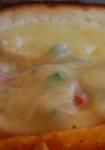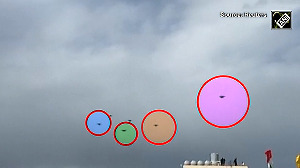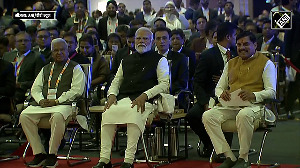One area which has continually troubled all test takers is Verbal Reasoning. Not only is the subject matter of the questions dense, the options are extremely close too. This renders one incapable of marking a particular answer option, with conviction, as the correct one. Here are some tried and tested methods to reduce the ambiguity in three specific question types.
Read these features?
Vote! Worst-dressed Indian celebs
Shilpa Shetty sashays
Global meltdown: How the cookie will crumble in India
Fact, Inference, Judgements
These question types, after making a surprise comeback in CAT 2006, have irritated a lot of test takers to the end of their tether. A 'Fact' is easy to identify. The choice between a 'Judgement' and 'Inference' is somewhat tricky. A few tips to keep in mind while solving this question type:
- Always work with answer options: Locate a statement that is definitely a Fact or a Judgement, then eliminate the options that do not classify it as such.
- Words that are used in the comparative or the superlative degree often qualify statements as Inferences. For example highest, taller, largest, heaviest etc can only be arrived at after verifying data, hence the statements involved are inferences.
- Identify where the emphasis is in the sentence structure. It is possible that the latter part of a statement may be a Fact but the emphasis is on the former part which is a Conclusion derived from that Fact. Clearly, such a statement qualifies as an Inference.
- Statements that use a lot of adjectives and adverbs; words like 'should', 'must,' 'only' , 'never', 'always', 'all' etc. have a tendency to be Judgements.
Consider this question from CAT 2006:
Instructions: Classify each of the statements into:
F. Facts, which deal with the pieces of information that one has heard, seen or read, and which are open to discovery or verification or
I. Inferences, which are conclusions drawn about unknown, on the basis of the known or
J. Judgements, which are opinions that imply approval or disapproval of persons, objects, situations and occurrences in the past, the present or the future.
1. Given the poor quality of service in the public sector, the HIV/AIDS affected should be switching to private initiatives that supply anti-retroviral drugs (ARVs) at a low cost.
2. The government has been supplying free drugs since 2004, and 35000 have benefited upto now - though the size of the affected population is 150 times this number.
3. The recent initiatives of networks and companies like AIDSCare Network, Emcure, Reliance-Cipla-CII, would lead to availability of much-needed drugs to a larger number of affected people.
4. But how ironic it is that we should face a perennial shortage of drugs when India is one of the world's largest suppliers of generic drugs to the developing world.(1) JFIJ
(2) JIIJ
(3) IFIJ
(4) IFFJ
(5) JFII
Solution:
The given options require you to evaluate statement 1 as either a Judgement or an Inference. 'Given the poor quality of services in the public sector...' is more of a Judgement than an Inference. What constitutes poor quality can differ from person to person. Based on this, the conclusion "should be switching..." is clearly an opinion and establishes statement 1 as a Judgement. This eliminates option 3 and 4.
The numbers in statement 2 are a result of direct verification. Hence, statement 2 is a Fact. This eliminates option 2.
Evaluating options 1 and 5, both of which have statement 3 as an inference, one has to now establish whether statement 4 is an Inference or a Judgement (as per options 1 and 5).
"...how ironic it is..." can neither be verified nor is it verifiable through facts. Statement 4 is thus a Judgement.
Hence, the correct answer is option 1.
Critical Reasoning
These questions are an epitome of verbal reasoning and test your depth of understanding. The questions are in the form of -- 'Which of the following best strengthens the argument', 'weakens the assertion', 'is a valid conclusion', 'assumption of the passage' etc. A good strategy to employ in these question types is to:
- Read the question stem first, before even reading the main paragraph -- comprehend exactly what is required to be done with the given data.
- After reading the question stem, read the main paragraph and eliminate the answer options that do not resonate with the question asked. The best, and perhaps the only way to answer this question type is by the elimination route rather than the selection route. Go on eliminating the incorrect answer options and thereby move closer to the correct answer option.
- Another important aspect to keep in mind is to pay attention to the way words have been used, and the sentences structured. Some words change the meaning of the given data subtly, others majorly, thus rendering that answer option invalid.
Paragraph Completion, Paragraph Summary
The key to cracking these question types is to identify the gist of the data given. Spend time understanding the paragraph before moving on to the answer options. Identify the purpose of writing the paragraph: the core idea. This can be done by looking at the connecting words used in the paragraph. Avoid answer options that add new data, or change the degree of intensity or the tone of the paragraph.
Let's take a 'Paragraph Completion' question from CAT 2007:
Instructions: The question has a paragraph from which the last sentence has been deleted. From the given options, choose the one that completes the paragraph in the most appropriate way.
Nevertheless, photographs still retain some of the magical allure that the earliest daguerreotypes inspired. As objects, our photographs have changed; they have become physically flimsier as they have become more technologically sophisticated. Daguerre produced pictures on copper plates; today many of our photographs never become tangible thins, but instead remain filed away on computers and cameras, part of the digital ether that envelops the modern world. At the same time, our patience for the creation of images has also eroded. Children today are used to being tracked from birth by digital cameras and video recorders and they expect to see the results of their poses and performances instantly. The space between life as it is being lived and life as it is being displayed shrinks to a mere second.
(1) Yet, despite these technical developments, photographs still remain powerful because they are reminders of the people and things we care about.
(2) Images, after all, are surrogates carried into battle by a soldier or by a traveller on holiday.
(3) Photographs, be they digital or traditional, exist to remind us of the absent, the beloved, and the dead.
(4) In the new era of the digital image, the images also have a greater potential for fostering falsehood and trickery, perpetuating fictions that seem so real we cannot tell the difference.
(5) Anyway, human nature being what it is, little time has passed after photography's inventions became means of living life through images.
Solution:
The essence of the paragraph is Photographs still have some allure, in spite of going digital. The key word is 'Nevertheless 'at the beginning of the paragraph. This resonates with 'yet' at the beginning of option 1 and completes the paragraph logically. The paragraph starts with the core idea, moves on to state how the technology behind creating photographs has evolved, and concludes by coming back to the core idea.
Let's evaluate the other 4 other options. Option 2 adds new data with 'soldier' and 'traveller', and option 3 with 'beloved' and 'dead' They merely extend the paragraph without completing it. Option 4 could be a good option, except that it does not accommodate 'nevertheless' given at the start of the paragraph. Option 5 too adds a new (tangential) idea which extends the paragraph instead of concluding it. Option 1 is the reason why the paragraph is written -- to communicate that 'photographs are still powerful'. Hence, the correct answer is option 1.
Try implementing these strategies in your next set of mock CATs. Tell us if your conviction and scores don't improve.
TestFunda.com is a site for personalised online preparation for competitive entrance exams like CAT, FMS, XAT, etc. TestFunda.com also provides free Mock CATs, CAT question of the Day, Daily CAT word list, logical puzzles and Interactive Learning Games.






 © 2025
© 2025